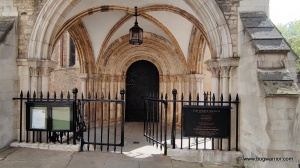I haven’t posted here for a while so I have some catching up to do. The first new/old post I’ll do is about the Temple Church in London. When staying in the city last year, I had the good fortune to stay in a (then) very reasonably priced hotel that was right next door.
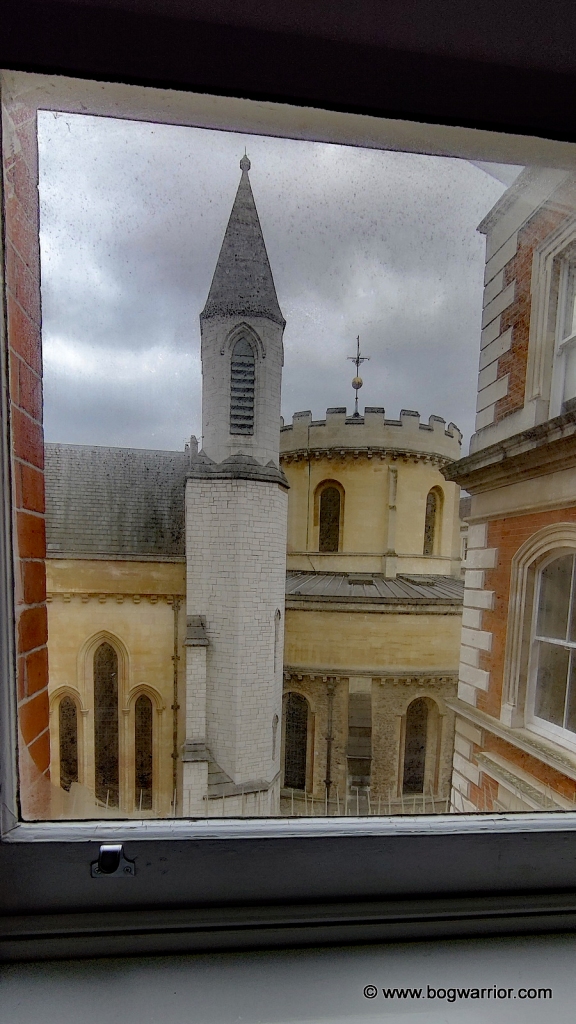
I knew very little about the church other than that it popped up in The Da Vinci Code which I read about 20 years ago, and that it had something to do with the Knights Templar. It turns out to be far more interesting than that and has connections to one of my favourite places in Ireland.

The church is at the end of a laneway, a short walk from Fleet Street. It’s nestled in the middle of London’s legal district and is surrounded by impressive looking office buildings and gardens. It’s also nice and peaceful which is always welcome in this part of the world.
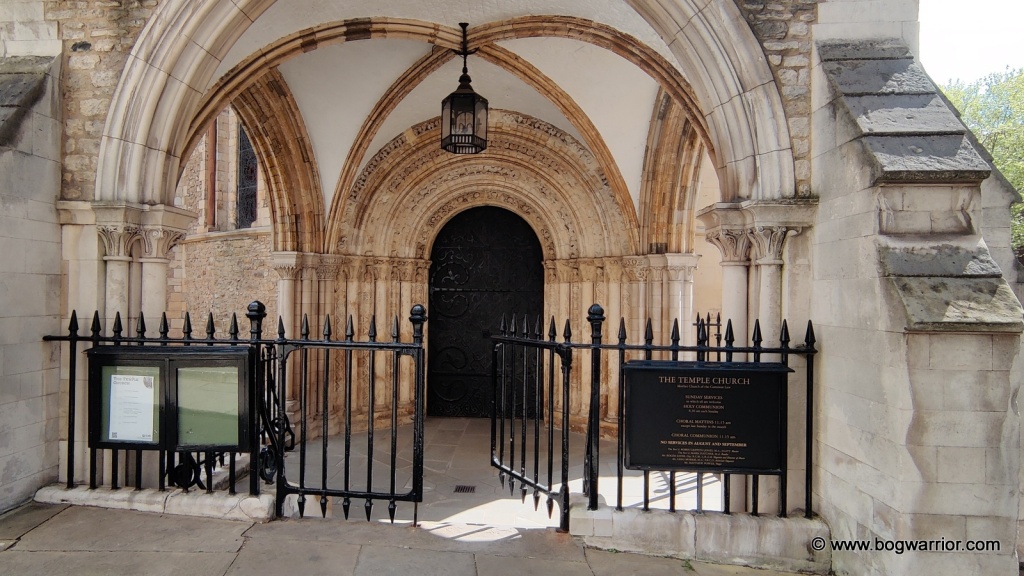
The first thing of note when you reach the church is its impressive looking West Doorway. It’s the entrance into the round part of this unusual church – more of that in a moment. Part of the decorations on the doorway include heads wearing turbans, caps and buttons. Some of these point to the interesting history of the people who built it.
The organisation which became known as the Knights Templar was founded in 1118. One of its aims was to protect pilgrims travelling to and from Jerusalem. Although they were based in Jerusalem, in time they built a base in London. In 1162 a round church was built here, inspired by the (also round) Church of the Holy Sepulchre back in Jerusalem. A chancel was later added. The area surrounding the church became known as Temple and it became the centre of religious, political and political life in London.
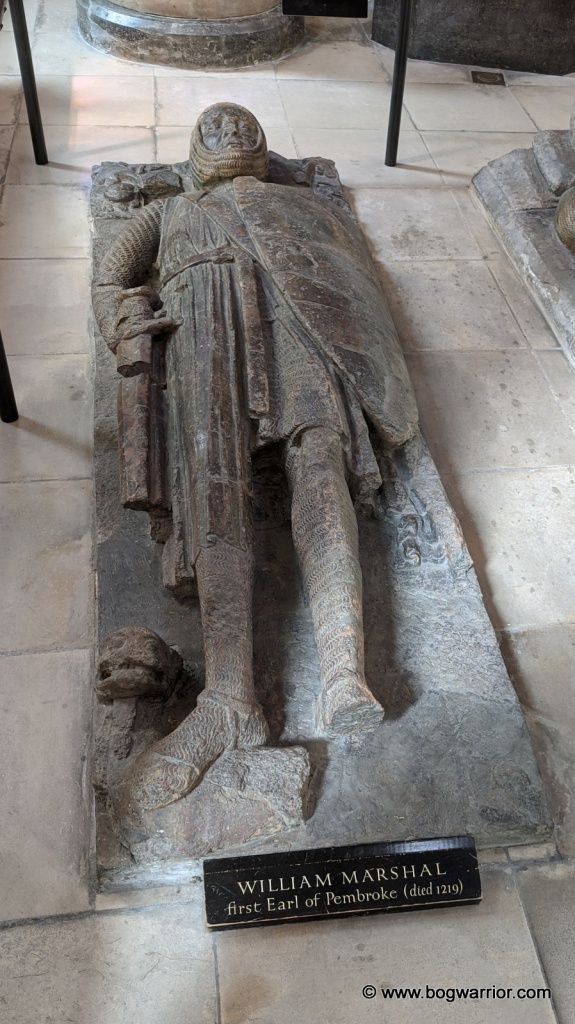
The entrance into the church is just around the corner and once inside, you’re free to roam and get a good look at the place. One of the first things to be seen in the church are 9 male effigies on the floor. The most remarkable of them all is probably that of William Marshal, the first Earl of Pembroke. He has been described as “The Best Knight that Ever Lived”. He certainly lived an eventful life and his influence extended across into Ireland. Amongst other things, he was responsible for the building of Hook Lighthouse in County Wexford 😎 William served four Kings of England and was one of the main negotiators involved in the drawing up of the Magna Carta. Indeed he was one of the signatories of it. When excavations were carried out in the church in 1842, medieval coffins were found under the floor. These are thought to have included William.

Being a tower freak, it wasn’t long before I was heading up the stairs and into the gallery. Perhaps it’s for the best that I didn’t spot any signs of the creepy tiny penitential cell that’s just off the stairs. It’s little more than the size of a broom cupboard. The story goes that an unfortunate man called Walter Bachelor was locked into the cell and left to starve to death in 1301. Is the story true? It isn’t clear but it was just one of the nefarious rumours about the Templars which were floating around at the time. On Friday 13th October 1307, King Philip IV of France and Pope Clement V moved to end the Knights Templar. King Edward II handed the church over to the order of St. John.
Like just about every other old building, the church was tweaked over the years. Sir Christopher Wren made some changes to it, but nothing like what the Victorians did. Their alterations weren’t universally popular. However, most of that was lost on the night of 10th May 1941 when German bombers dropped over 700 tons of explosives over London. Along with the huge cost to human life (an estimated 1,400 deaths and 2,000 injuries), huge swathes of the city were destroyed. The Temple Church, which had survived the Great Fire of London, was one of the casualties. It was badly damaged during the fire and it took 14 years for the church to be fully repaired.

Amusingly, some of the mediaeval-inspired encaustic floor tiles which the Victorians had laid survived. These can be seen up in the gallery and they’re very striking. I also learned a new word – encaustic, encaustic…
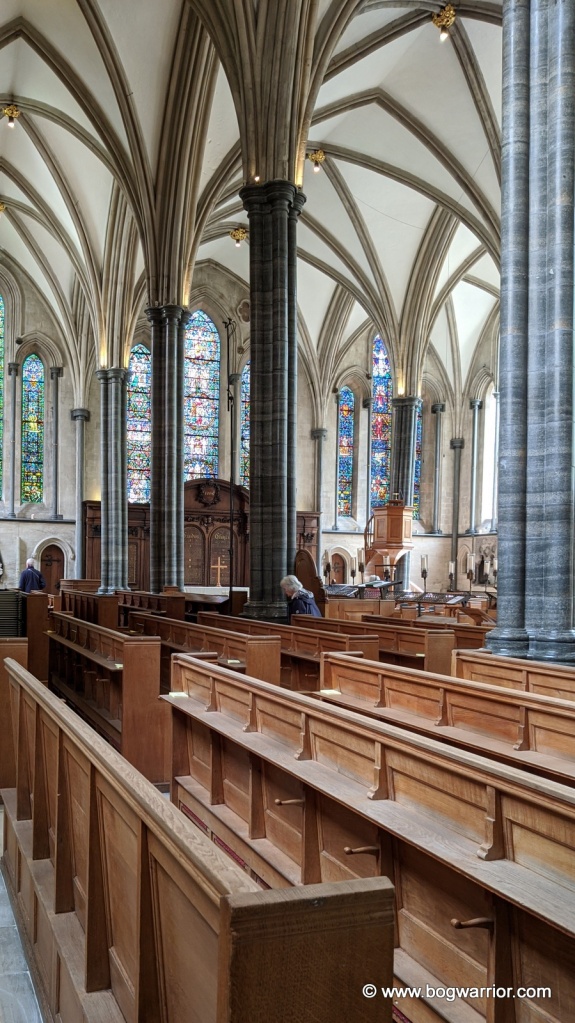
The fire had shattered the original columns in the church, so new ones were quarried for it. The originals had been noted for their crookedness, so when they were rebuilding, they continued the tradition. It goes without saying that the fire also destroyed the original church organ. Its replacement came from an unlikely source – Glen Tanar castle in Scotland. The organ had originally been built for the castle ballroom but the acoustics in the room didn’t suit it. (As an aside, I’ve never seen so many deer antlers in the one place…). And so, the organ was gifted to the church by Lord Glentanar and it was shipped down to London. Not only did it sound much much better in its new home, it gained a reputation for being a really great organ. Much of the soundtrack to Christopher Nolan’s 2014 film Interstellar was recorded on this organ, with resident organist Roger Sayer collaborating with composer Hans Zimmer. Unfortunately, I visited on a Monday so I didn’t get to hear one of the church’s Wednesday lunchtime recitals.
Churches to visit are ten-a-penny in London but this one comes highly recommended. Even though it was badly damaged during the war, the painstaking restoration of it is superb. It’s an unusual church with an interesting, sometimes dark history. And by London admission price standards, the entrance fee is pretty reasonable (£5 at the time of writing)
Gallery – click on a thumbnail to enlarge.


